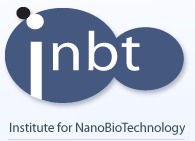Home > Press > INBT Grant Proposal Service: Formula for Funding Success
 |
Abstract:
To support their research endeavors, scientists must rely on the grant support they receive from institutions such as the National Institutes of Health (NIH) and the National Science Foundation (NSF).
INBT Grant Proposal Service: Formula for Funding Success
Baltimore, MD | Posted on September 17th, 2007The application process for these grants is a tedious and time consuming process, which in the multidisciplinary field of nanobiotechnology, often involves scientists from different fields of expertise. These collaborations add an extra level of difficulty to the already lengthy of submitting a successful proposal.
In an effort to maximize the possibilities for nanobiotechnology research at Johns Hopkins University, the Institute for NanoBioTechnology (INBT) not only brings faculty together but offers them help to prepare and submit nanobiotechnology related proposals.
"It's a great service we offer that fits in with the goal of the Institute," says Sue Porterfield, administrative manager at INBT. "Most of these multidisciplinary grants would take the faculty and their department administrators a lot of time to prepare."
Porterfield is the main force behind the proposal service. She estimates that she spends about 75 percent of her time preparing, submitting, and eventually administering the nanobio grants submitted through INBT.
Apparently, Porterfield has developed an effective system. Since the INBT's launched in May 2006, 36 percent of the proposals submitted through fiscal year 2007 were successfully awarded. (For comparison, the national average of awarded proposals from both NIH and NSF is closer to 20 percent.)
The numbers also show INBT's cross divisional dimensions. Thirty-four faculty members acted as primary investigators (PIs) or co-PIs, representing four different divisions within Johns Hopkins University: the School of Medicine, the Bloomberg School of Public Health, the Krieger School of Arts and Sciences, and the Whiting School of Engineering.
If you would like to learn more about the grant proposal service or funding opportunities through INBT, contact Sue Porterfield at .
####
About Institute for NanoBioTechnology
The Institute for NanoBioTechnology at Johns Hopkins University will revolutionize health care by bringing together internationally renowned expertise in medicine, engineering, the sciences, and public health to create new knowledge and groundbreaking technologies.
INBT programs in research, education, outreach, and technology transfer are designed to foster the next wave of nanobiotechnology innovation.
Approximately 140 faculty are affiliated with INBT and are also members of the following Johns Hopkins institutions: Krieger School of Arts and Sciences, Whiting School of Engineering, School of Medicine, Bloomberg School of Public Health, and Applied Physics Laboratory.
For more information, please click here
Contacts:
* Institute for NanoBioTechnology
214 Maryland Hall
3400 North Charles Street
Baltimore, MD 21218
* Email:
* Phone: (410) 516-3423
* Fax: (410) 516-2355
Sue Porterfield
Copyright © Institute for NanoBioTechnology
If you have a comment, please Contact us.Issuers of news releases, not 7th Wave, Inc. or Nanotechnology Now, are solely responsible for the accuracy of the content.
| Related News Press |
Govt.-Legislation/Regulation/Funding/Policy
![]() New imaging approach transforms study of bacterial biofilms August 8th, 2025
New imaging approach transforms study of bacterial biofilms August 8th, 2025
![]() Electrifying results shed light on graphene foam as a potential material for lab grown cartilage June 6th, 2025
Electrifying results shed light on graphene foam as a potential material for lab grown cartilage June 6th, 2025
![]() Institute for Nanoscience hosts annual proposal planning meeting May 16th, 2025
Institute for Nanoscience hosts annual proposal planning meeting May 16th, 2025
Announcements
![]() Rice membrane extracts lithium from brines with greater speed, less waste October 3rd, 2025
Rice membrane extracts lithium from brines with greater speed, less waste October 3rd, 2025
![]() Researchers develop molecular qubits that communicate at telecom frequencies October 3rd, 2025
Researchers develop molecular qubits that communicate at telecom frequencies October 3rd, 2025
![]() Next-generation quantum communication October 3rd, 2025
Next-generation quantum communication October 3rd, 2025
![]() "Nanoreactor" cage uses visible light for catalytic and ultra-selective cross-cycloadditions October 3rd, 2025
"Nanoreactor" cage uses visible light for catalytic and ultra-selective cross-cycloadditions October 3rd, 2025
Grants/Sponsored Research/Awards/Scholarships/Gifts/Contests/Honors/Records
![]() Researchers tackle the memory bottleneck stalling quantum computing October 3rd, 2025
Researchers tackle the memory bottleneck stalling quantum computing October 3rd, 2025
![]() New discovery aims to improve the design of microelectronic devices September 13th, 2024
New discovery aims to improve the design of microelectronic devices September 13th, 2024
![]() Physicists unlock the secret of elusive quantum negative entanglement entropy using simple classical hardware August 16th, 2024
Physicists unlock the secret of elusive quantum negative entanglement entropy using simple classical hardware August 16th, 2024
|
|
||
|
|
||
| The latest news from around the world, FREE | ||
|
|
||
|
|
||
| Premium Products | ||
|
|
||
|
Only the news you want to read!
Learn More |
||
|
|
||
|
Full-service, expert consulting
Learn More |
||
|
|
||








